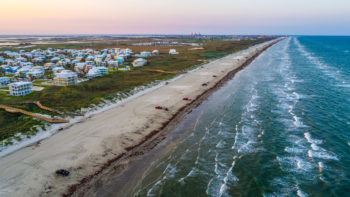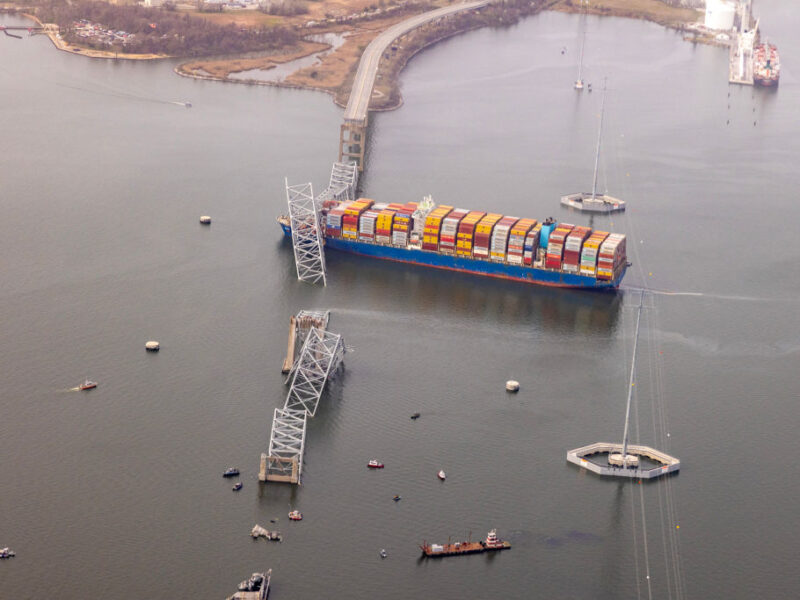Texas A&M Expert: Storms Worsening State’s Beach Erosion Problem

Numerous tropical storms and hurricanes have damaged the Texas coast in recent months, and these storms have very likely contributed to beach erosion, according to a Texas A&M University at Galveston expert.
Jens Figlus, professor in the Department of Ocean Engineering at Texas A&M-Galveston, said Texas has some locations with relatively high beach erosion rates, and the problem has been occurring for hundreds of years.
While data is still coming in from this summer’s storms, there’s little doubt that the issue has worsened in several areas of the Texas coast.
Any erosion would be bad. According to the Texas General Land Office, which governs Texas coastal issues, the average erosion rate along Texas’ 367-mile coastline is 4.1 feet per year. But 64 percent of the Texas coast is eroding at an average rate of six feet per year, and some locations are losing 30 feet a year.
From 2000-2019, some of the areas hit hardest by beach erosion include those just west of Sabine Pass along the Texas Point and McFaddin National Wildlife Refuges, parts of Follet’s Island, the area around the Brazos River mouth, the thin barrier island lining the San Bernard National Wildlife Refuge and East Matagorda Bay, as well as parts of the Matagorda Peninsula, and Padre and South Padre Islands, surveys by the Bureau of Economic Geology show.
“For Galveston Island the general trend is beach erosion in the center, but accretion at the two ends (East End and San Luis Pass),” Figlus said. “In front of the seawall, the beaches seem to be fairly steady, mainly due to sediment nourishment efforts and increasing coverage with vegetation. The West End of the island has been hit hard and shows erosion rates of almost eigh feet a year in some parts, but there are years when it reduces again.”
Erosion still continues at several locations, and will most likely increase again depending on sea level rise scenarios, Figlus said.
Erosion can result in such problems as decreased property rates of homes and businesses, and even less tourism. In addition, ports, roads and infrastructure can be at risk, and farming and fishing industries can be affected. Also, healthy beaches, dunes and wetlands help protect the coast, and without them, hurricanes can be even more destructive, according to the GLO.
This presents obvious problems: According to NOAA, almost 40 percent of the U.S. population lives near a coastal area.
Figlus said that rising sea levels could be of particular future concern.
“Even a one-foot rise over the next 80 years — which is a relatively low estimate — would already be detrimental to Galveston beaches considering the fact that they have nowhere to retreat to at the seawall,” Figlus said. “A very crude estimate of shoreline retreat would mean that a one-foot increase in sea level could cause a 200-foot retreat in shoreline.”
Beach erosion rates can be difficult to measure, he said, because where sediment is lost in one area, it is almost always re-deposited somewhere else.
“Nourishment remains our best weapon to fight erosion,” Figlus said. “But there are many innovative ideas out there that will have to be implemented in addition to help reduce the coasts’ susceptibility to erosion. These include proper vegetation strategies since plant roots are capable of binding sand grains and providing increased stability against erosion. Other ideas should be further developed and tested as well. For example, we are now testing ways how naturally occurring microbes can strengthen and stabilize Texas beach sands to help reduce the impact of erosion in some areas.”
Media contacts:
- Jens Figlus, 409-741-4317, figlusj@tamug.edu
- Rebecca Watts, Texas A&M at Galveston Communications, rwatts@tamug.edu





